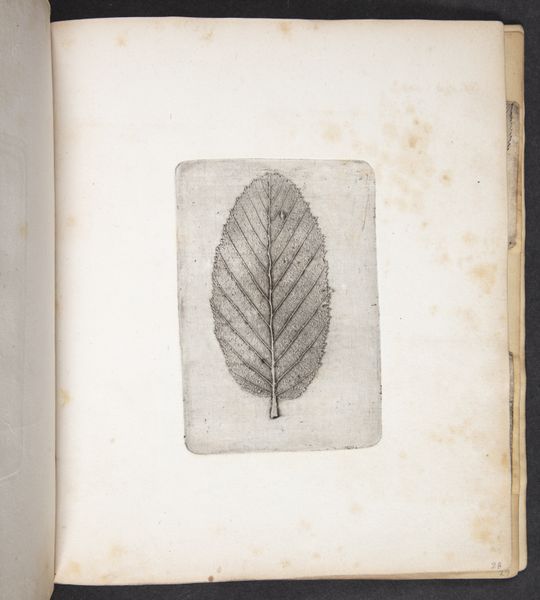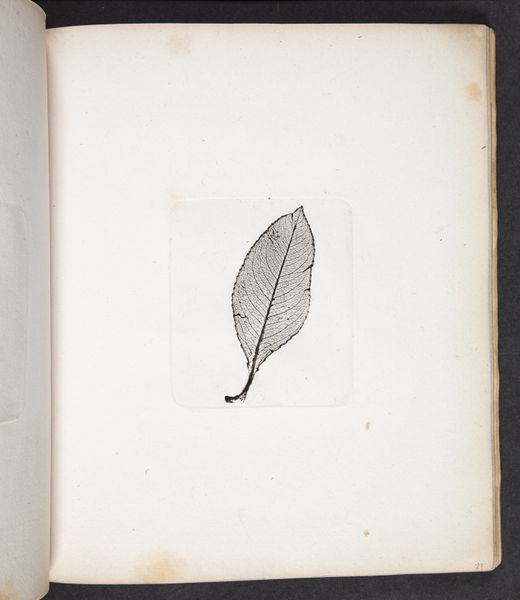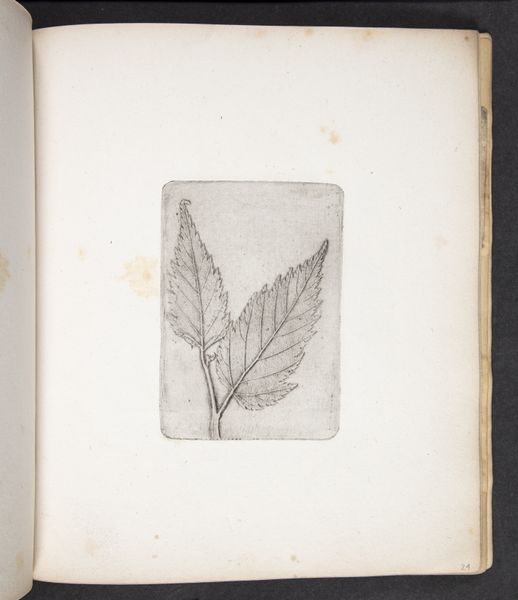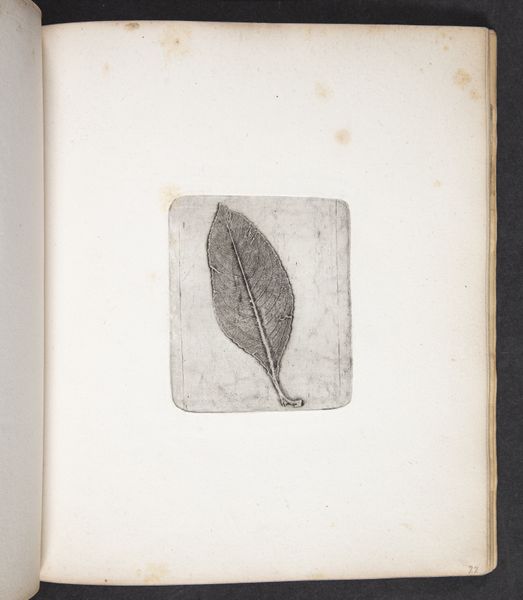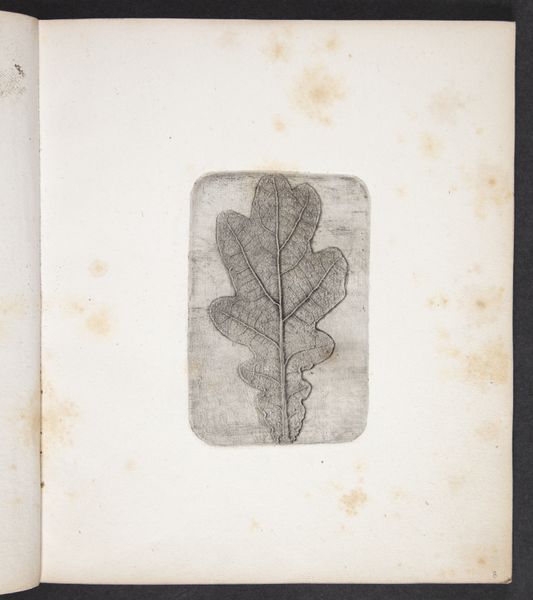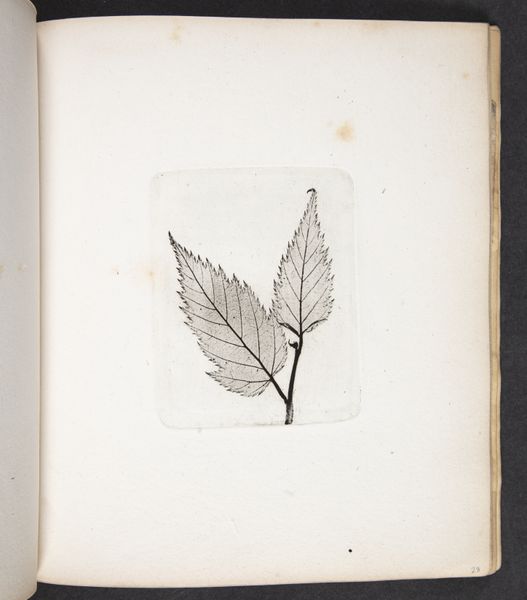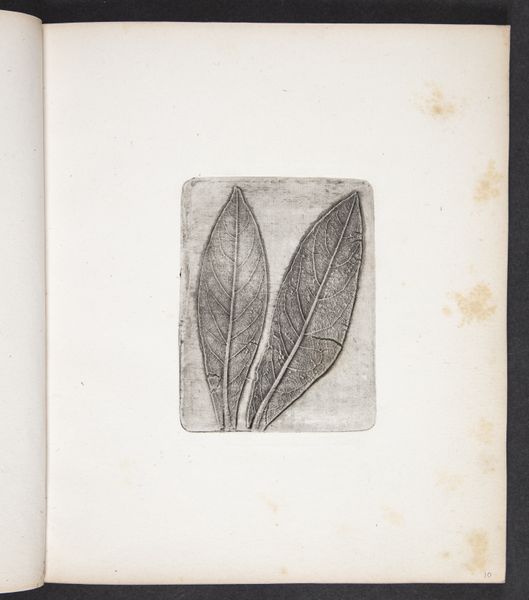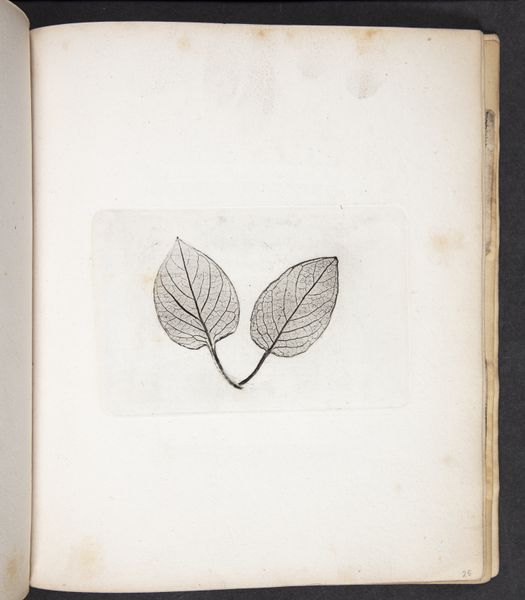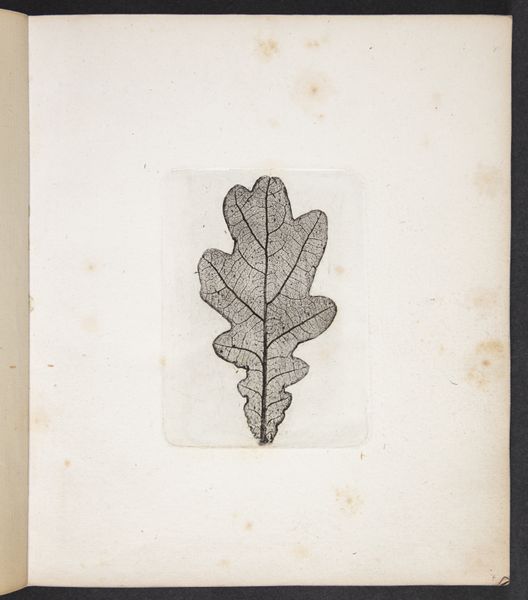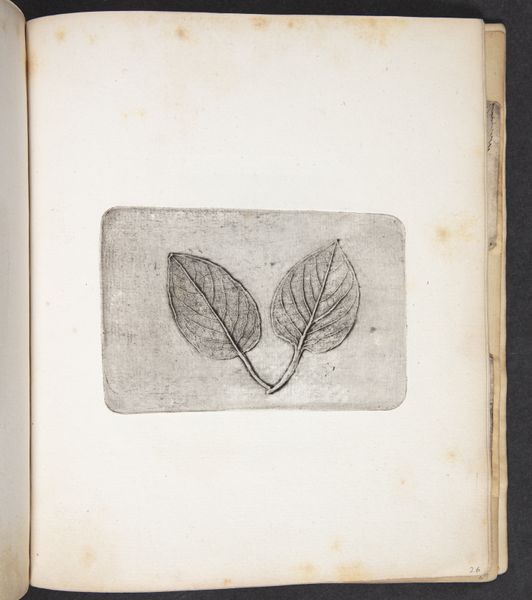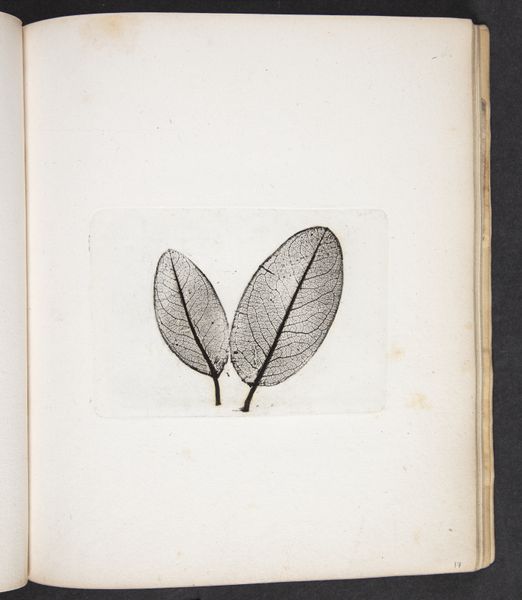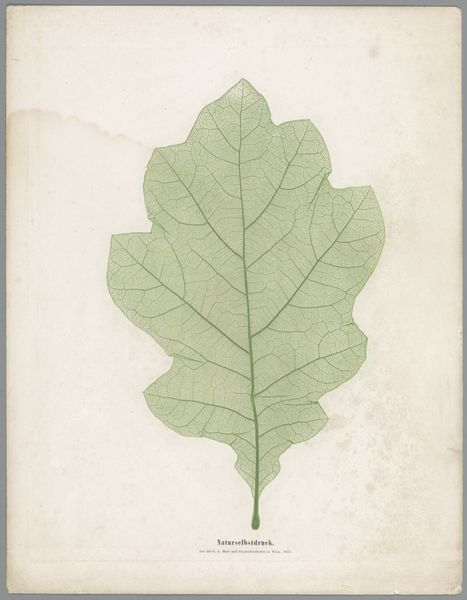
drawing, print, paper, ink
#
drawing
# print
#
paper
#
form
#
ink
#
line
#
northern-renaissance
#
realism
Dimensions: 207 mm (height) x 182 mm (width) (Bladmål), 106 mm (height) x 79 mm (width) (Plademål)
Curator: The meticulous detail! It’s as if the essence of the leaf has been captured in stasis. Editor: That's an interesting reaction! What strikes you as most significant from a formal perspective? Before us is "Aftryk af blad," which translates to "Impression of a Leaf," crafted in 1833 by Peter Larsen Kyhl. Executed in ink on paper, employing drawing and print techniques, this work is housed at the SMK, the National Gallery of Denmark. Curator: Well, initially, it’s the pure linear elegance. Look at how the ink traces every vein, capturing the architecture of the leaf with an almost scientific precision. The artist isn't just representing a leaf; he's presenting its very form. The use of line to create depth and texture is masterful, almost reminiscent of Northern Renaissance engravings in its detail, yet decidedly realistic. Editor: It’s fascinating to see such detail preserved through printmaking in the 19th century. What can an artwork like this, emphasizing realism and natural form, tell us about the art world and societal concerns of its time? Curator: In Kyhl's time, the intersection of art and science was gaining prominence, especially as the understanding of the natural world deepened. Botanical studies and publications became fashionable, making pieces such as Kyhl's work valuable tools for instruction and cultural reflection on Denmark's natural bounty. How did this focus on realism relate to its historical reception? Editor: Realism became a popular aesthetic, expressing values related to national identity, pride in the region's landscapes, and respect for Denmark’s rich biodiversity. It’s hard to quantify precisely how it was originally viewed, but that such a delicate impression has been valued enough to be held at the SMK suggests enduring recognition of its beauty and socio-cultural value. Curator: So, the beauty here isn't merely representational; it is in how the art itself contributes to broader themes. What begins as a single leaf expands into conversations of nationhood and scientific curiosity. Editor: Exactly. Kyhl’s leaf reflects nature and subtly participates in the public narrative—not only portraying what it is but, critically, what it meant to a growing nation. It's an enduring testament. Curator: I'll leave with a newly formed curiosity about what Kyhl might have thought about seeing others view his artwork centuries later. Editor: Likewise. Seeing how historical art is reframed with each generation remains the rewarding part of being an art historian.
Comments
No comments
Be the first to comment and join the conversation on the ultimate creative platform.
